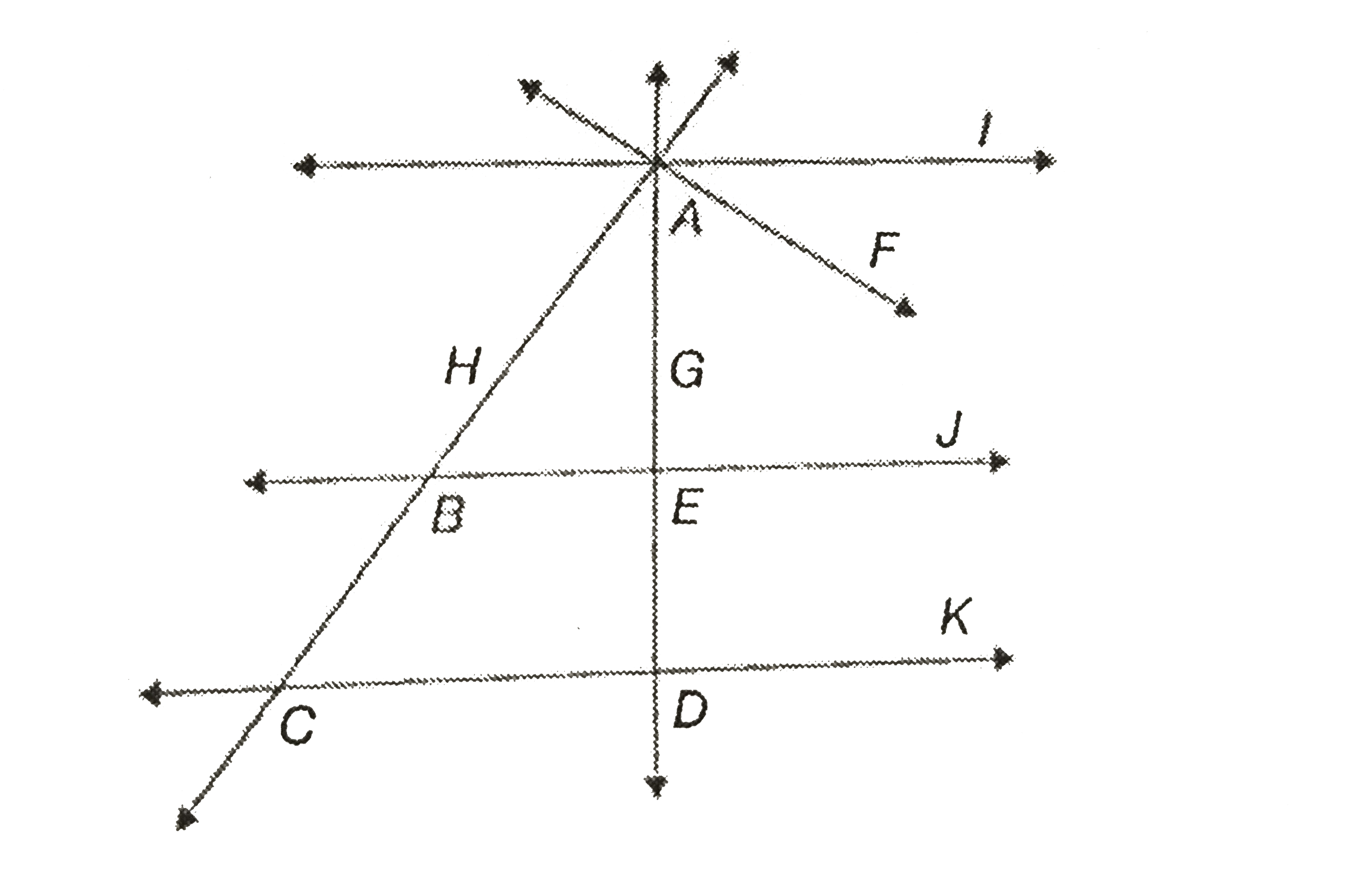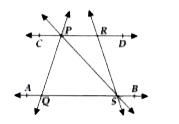Given three examples each of : intersecting lines parallel lines from your environment.
Step-by-Step Solution:
Step 1: Identify Examples of Intersecting Lines
- Intersecting lines are lines that cross each other at a point.
- Example 1: The edges of a room. When you look at the corners of a room, the walls intersect at right angles.
- Example 2: Two pens placed on a table. If one pen is placed diagonally across another, they intersect at the point where they cross.
- Example 3: Two books placed on a table. If one book is laid across the other, they intersect at the point where they touch.
Step 2: Identify Examples of Parallel Lines
- Parallel lines are lines that run alongside each other and never meet, maintaining the same distance apart.
- Example 1: Two strings hanging from a wall. If they are tied at both ends and are kept at the same height, they remain parallel.
- Example 2: Two books stacked on a shelf. If they are placed side by side without overlapping, they are parallel.
- Example 3: Two pens lying on a table, placed next to each other without crossing. If they are aligned and the distance between them remains constant, they are parallel.
Final Examples Summary:
- Intersecting Lines:
1. Edges of a room (walls intersecting).
2. Two pens crossing each other.
3. Two books laid across each other.
- Parallel Lines:
1. Two strings hanging at the same height.
2. Two books placed side by side on a shelf.
3. Two pens lying next to each other on a table.
---
- Intersecting lines are lines that cross each other at a point.
- Example 1: The edges of a room. When you look at the corners of a room, the walls intersect at right angles.
- Example 2: Two pens placed on a table. If one pen is placed diagonally across another, they intersect at the point where they cross.
- Example 3: Two books placed on a table. If one book is laid across the other, they intersect at the point where they touch.
- Parallel lines are lines that run alongside each other and never meet, maintaining the same distance apart.
- Example 1: Two strings hanging from a wall. If they are tied at both ends and are kept at the same height, they remain parallel.
- Example 2: Two books stacked on a shelf. If they are placed side by side without overlapping, they are parallel.
- Example 3: Two pens lying on a table, placed next to each other without crossing. If they are aligned and the distance between them remains constant, they are parallel.
- Intersecting Lines:
1. Edges of a room (walls intersecting).
2. Two pens crossing each other.
3. Two books laid across each other.
- Parallel Lines:
1. Two strings hanging at the same height.
2. Two books placed side by side on a shelf.
3. Two pens lying next to each other on a table.
Topper's Solved these Questions
Similar Questions
Given three examples of line segments from your environment.
View SolutionGive three examples of shapes with no line of symmetry.
View SolutionIntersecting and parallel lines
View SolutionFrom the following figure, identify,
(i) Pairs of intersecting lines
(ii) Parallel lines
(iii) Concurrent lines
 View Solution
View SolutionGiven an example of a horizontal plane and a vertical plane from your environment.
View SolutionObserve the given figures and say which are intersecting lines and which are parallel lines.
 View Solution
View SolutionObserve the given figures and say which are intersecting lines and which are parallel lines.
 View Solution
View SolutionObserve the given figures and say which are intersecting lines and which are parallel lines.
 View Solution
View SolutionTwo distinct intersecting lines cannot be parallel to the same line.
View SolutionIn the given figure, name:

four pairs of intersecting lines four collinear points (iii) three non-collinear points (iv) three lines whose point of intersection is pView Solution

